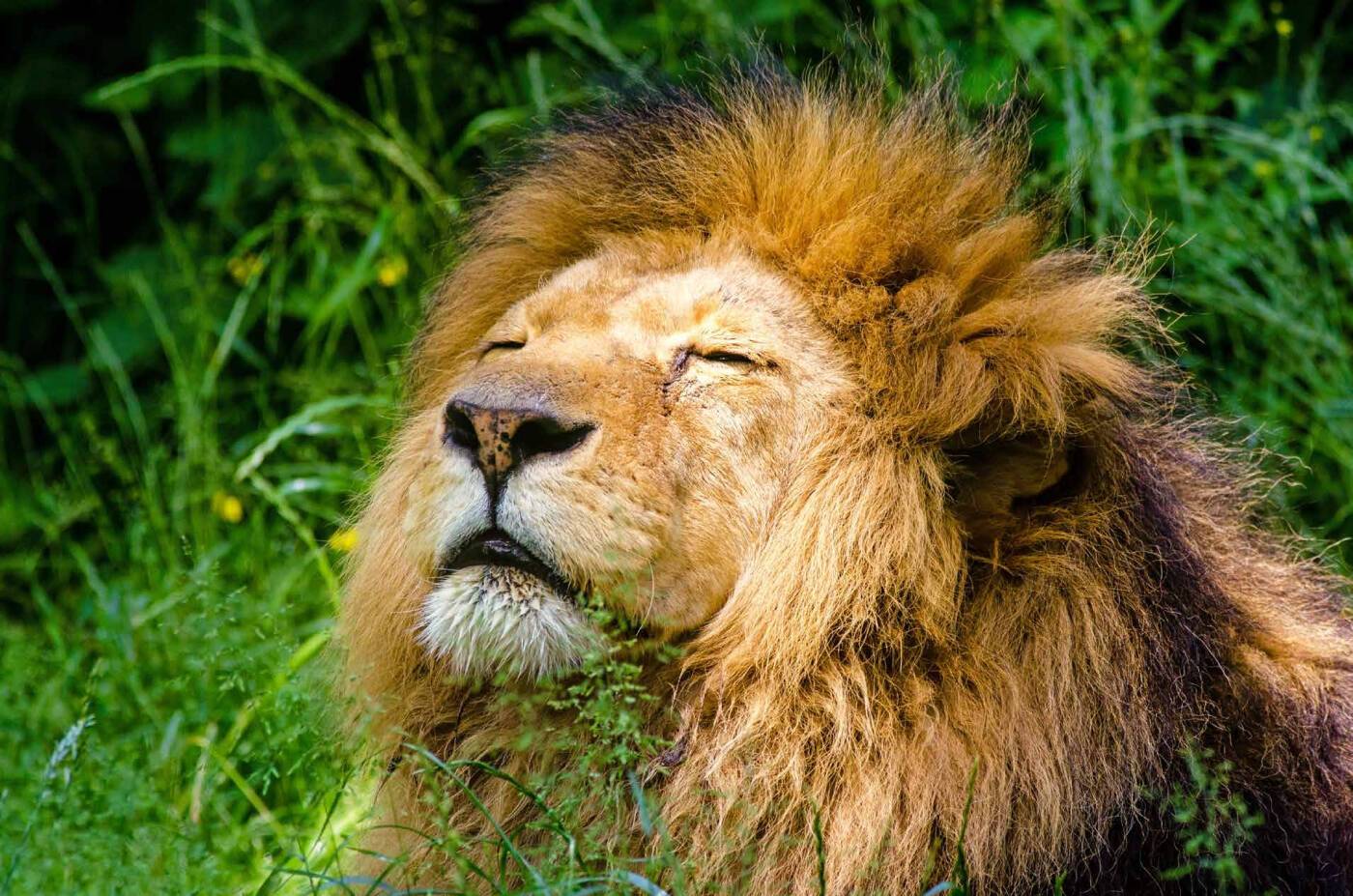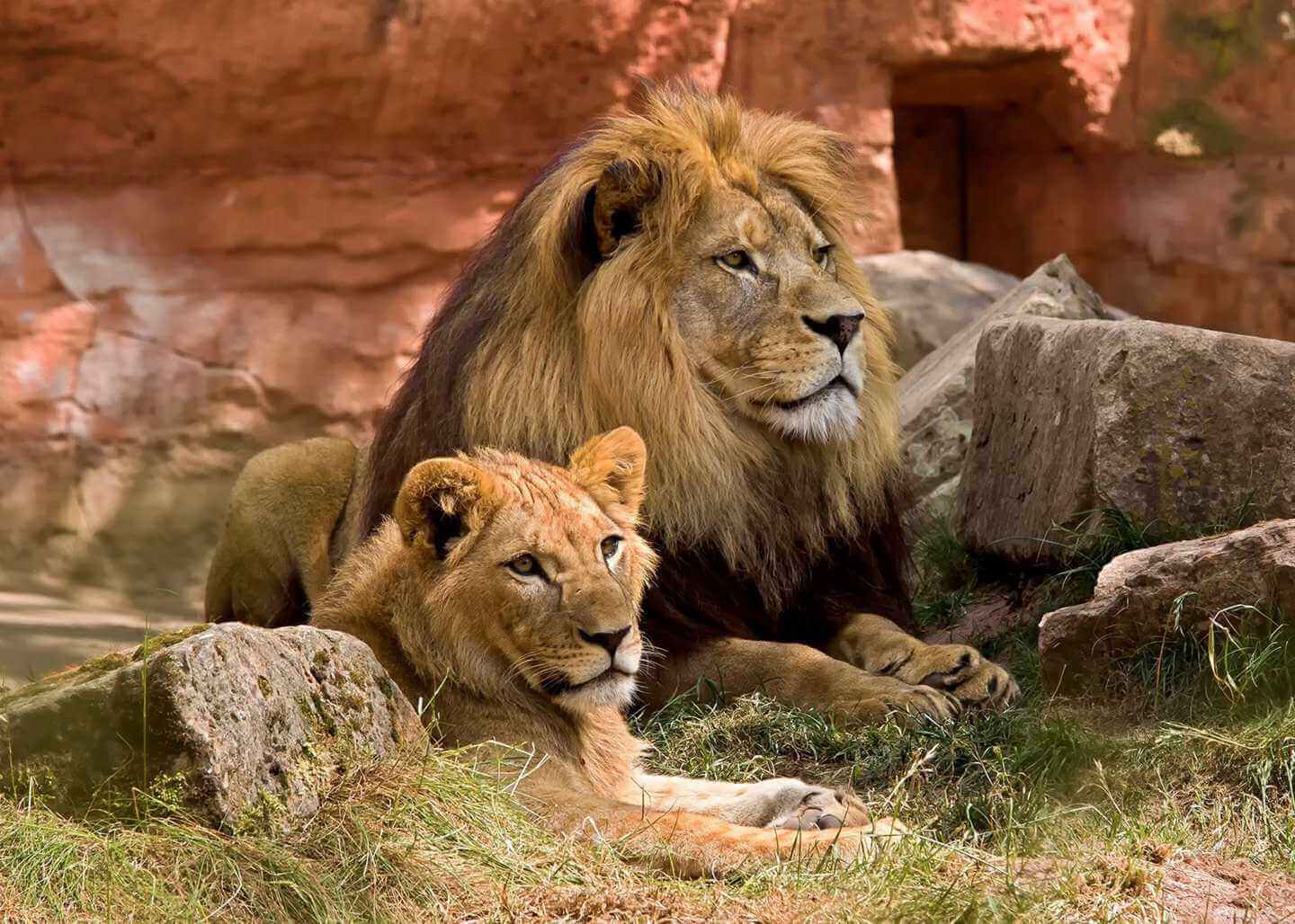
at Taman Safari Bali

at Taman Safari Bali
Lion in Taman Safari Bali
Lions are the second largest cats in the world after the tiger and can be found in Sub-Saharan Africa (West African Lion) and in western India (Asiatic Lion). They live in grasslands and savannahs. Males are larger than females with a weigh up to 250 kg. In addition, male lions have mane, which is perhaps the most recognizable feature of the species. Both sexes have hairy tufts at the end of their tails. They can eat up to 8 kg of meat. If you want to see lion in Bali, you have to go to Taman Safari Bali.

See me closer with:
Lions (Panthera leo)
The lion's mane is the most recognizable feature of the species. The mane starts growing when lions are about one year old. Mane color varies and darkens with age. Research results indicate that environmental factors, such as average temperature, influence the mane's color and size. Mane length apparently signals fighting success in male-male relationships. Darker-maned individuals may have longer reproductive lives and higher offspring survival. The main purpose of the mane is to protect the lion's neck and throat in territorial fights with rivals.
| DISTRIBUTION | Africa |
| HABITAT | Grassy plains and open woodlands |
| HEIGHT | Length: about 1.4 to 2 meters |
| WEIGHT | 120 – 191 kg |
| LIFESPAN | 10 to 14 years in the wild |
| THREATS | Hunting, poisoning and habitat loss |
Lions are the only social member of the cat (Felidae) family. They live in large groups called "pride" typically consisting of around 15 lions, including several adult females and up to four males and their cubs of both sexes. Male cubs are excluded from the pride when they reach maturity at around 2–3 years of age.
Lions within a pride are often affectionate and, when resting, seem to enjoy good fellowship with lots of touching, head rubbing, licking and purring. The males are territorial and will roar and use scent markings to establish their domains.
Females do almost all of the hunting. They are mainly nocturnal and work in teams to stalk and ambush prey.
Lions are carnivorous - they consume a wide variety of prey from big (zebra, giraffe, impala) to small animals (birds, hares, reptiles).
The lion population in Africa has been reduced by half since the early 1950s. Today, fewer than 21,000 remain in all of Africa.
Humans are pushing lions out of their natural habitat, which leads to the human-lion conflict to increase. Lions are also still being killed in rituals of bravery, as hunting trophies or for medicinal purposes.
African Wildlife Foundation has taken measures to conserve the lion, in which include mitigating human-lion conflict and tracking cats for conservation.
Lions spend much of their time resting and are inactive for about 20 hours per day.







